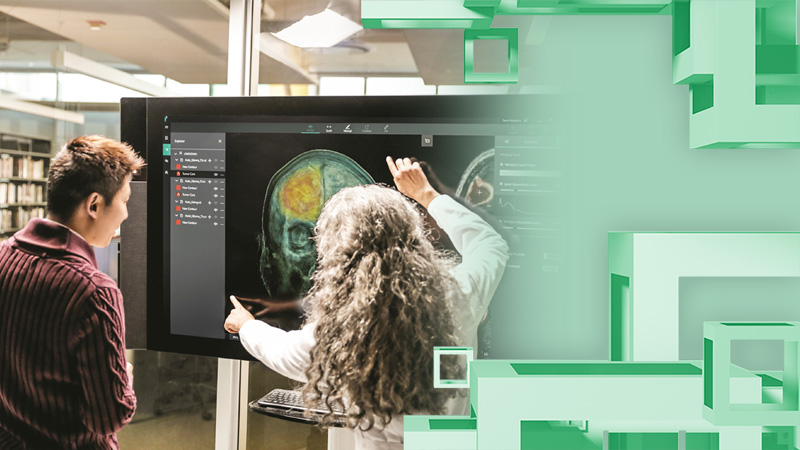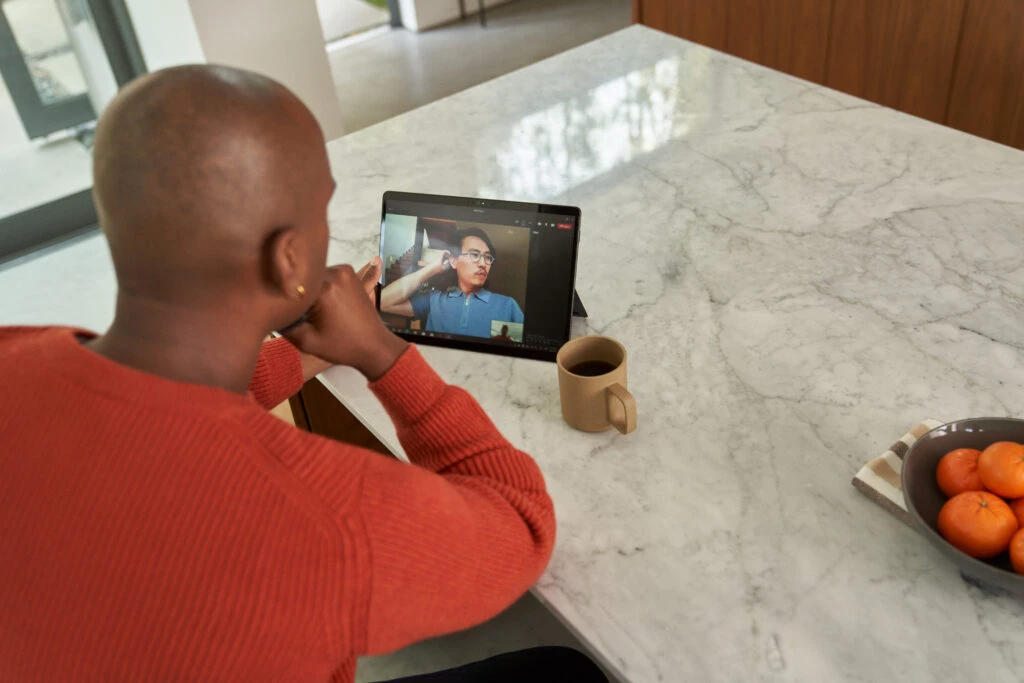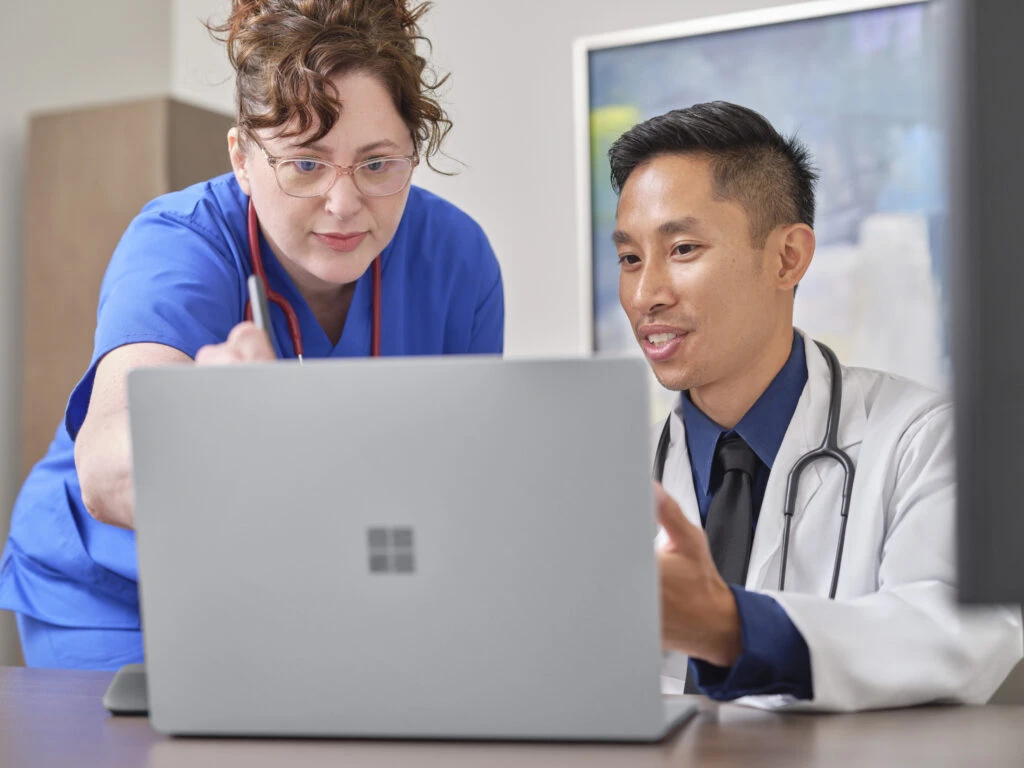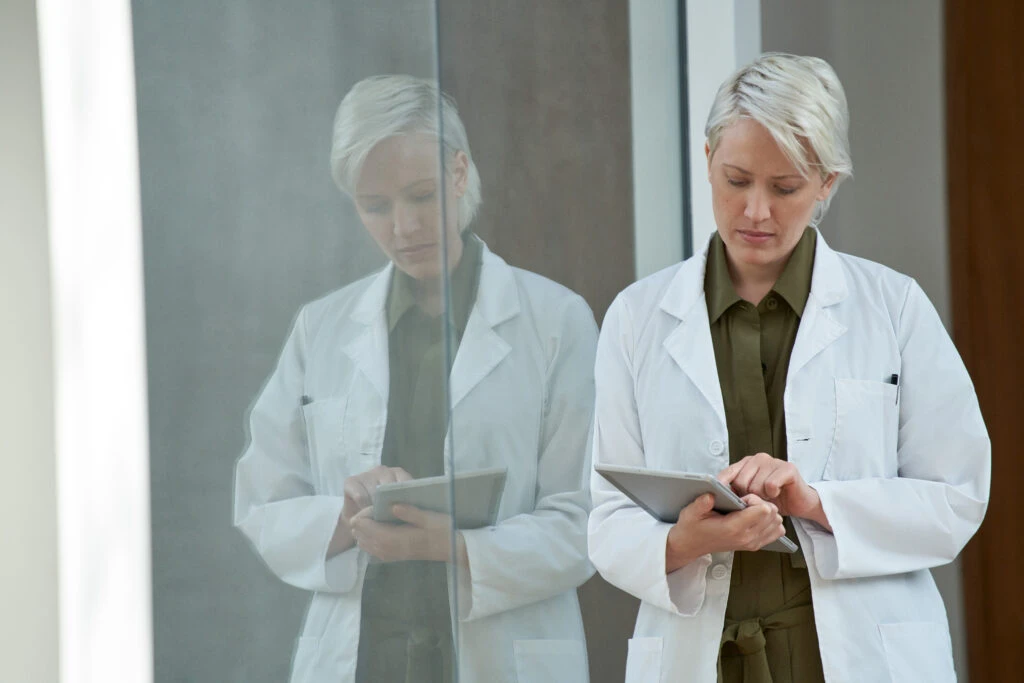
Hospitals everywhere: The answer to accessible and equitable healthcare?
My grandmother used to suffer from rheumatoid arthritis, and as such had very complex healthcare and social care needs. From sheltered housing to blue badges, wheelchairs and more, she required constant support and help.
For most of her patient life, the burden of managing both worlds – healthcare and social care – fell on my grandfather, an 80-plus-year-old gentleman with a passion for technology. As her home-based support, he was always eager to help, but often lacked the knowledge and means to do it. No one had ever taught him how to carry out remote monitoring or use blood pressure cuffs. As a result, he frequently struggled to keep my grandmother’s clinician informed in-between visits.

Today, technology is fundamentally changing how care is provided. Modern digital solutions are shifting the industry towards telehealth and remote services. This allows people like my grandparents to receive care at any time, wherever they are.
At the same time, the role of hospitals is changing too.
We’ve long been used to seeing them as patient magnets, but now the paradigm is shifting. As Integrated Care Systems prepare to launch in the UK, hospitals are turning into centres of excellence for clinicians.
That’s something that we at Microsoft want to help achieve. Using technology, we’re working to position hospitals as the lighthouse at the centre of planned and critical treatment. Providing patients with all the clinical coverage and expertise they need, without needing to be physically present.
Delivering unparalleled services in a new era of accessible and equitable care.
From hospital to housepital and hospitel
When I was a young student in Germany, I used to take a very peculiar type of school bus – one that today would be the definition of ‘utilitarian’. During the day, they were taking us to school, but overnight, they could easily be turned into field ambulances. They were capable of hosting some 20 hospital beds in case of necessity.
Years have passed since then, and yet the concept is still very much the same. If anything, it’s been amplified by the pandemic.
COVID-19 has expanded the way people see hospitals. They can almost be any place where you can safely plug in a laptop and use equipment to treat patients. This has meant repurposing both public-serving spaces. For example, we now talk about hospitels – or private ones, also called housepitals.
Countries around the world are now using hotel rooms as quarantine locations for those needing to self-isolate. Meanwhile, during lockdowns we’ve seen hospitality suites at the Arsenal Stadium being turned into pregnancy clinics. Field hospitals have been set up on the back of mini-buses and conference pavilions became hospital wards. All in the space of weeks.
Finally, virtual wards and remote care are increasingly taking place in our living rooms and bedrooms, where doctors can check on their patients through online platforms.
Towards a more hybrid patient journey

As the role of hospitals continues to be redefined, technology and data are reshaping the way health services are provided.
From the earliest stages of preoperative care, all the way through on-site services to the very end of postoperative care, digital solutions are turning the patient journey into a mix of on and off-site care. This helps organisations cope with demand and make better use of their resources.
A prime example is Project Breathe, a scheme that I’ve been fortunate to work on and which targets teenage and child patients with cystic fibrosis. Crucial to those suffering from this condition, which affects the lungs, is exercising at least three times a day to keep their breathing normal.
To make sure even the youngest patients commit to it – particularly when at home – Project Breathe has developed a solution that allows children to play computer games while blowing into their spirometer.
This isn’t just helping make the exercise more enjoyable. It also gains key data on the patient’s condition, which can then be analysed to make predictions. All while the patient never leaves home.
Sharing is caring
As a Global Industry specialist, my role is to oversee how Microsoft is helping organisations around the world to implement pioneering technology. That’s something really powerful. It allows me to learn valuable lessons across different countries and apply them to the British healthcare sector.
It’s also a great opportunity to share knowledge and expertise among various organisations and put them in contact for greater collaboration. A great example is the DRIVE initiative that Great Ormond Street Hospital has launched.
Created in collaboration with University College London and Siemens, this initiative brings together doctors, medical device experts and academics. Its goal is to come up with initiatives that inspire care teams to make more and better use of technology in their work.
This, to me, is fundamental to empowering the healthcare sector. Ensuring that all clinics and institutes have the same resources and capabilities is at the heart of providing efficient, reliable care for our communities. As well as the reason why I do this job: For the opportunity to create better access to healthcare and access to better healthcare.
Making healthcare accessible and equitable

If we really want to realise the idea of ‘hospitals everywhere’, then we need to ensure that everyone has the same technological means to access it.
This is, in my opinion, one of the biggest challenges the industry is facing. We’re seeing an increasingly strong link between health inequities and digital inclusion. As as result, too many people find themselves underserved and unable to access vital care.
Take my parents, for example. Living in a not-spot, they only get Wi-Fi connectivity when the Edinburgh to London train goes through, thanks to its onboard hotspot. Outside of that, they have to hang the phone out of their bedroom window to get a signal.
How can you run tele consultations when you’re living in these conditions?
That, to me, is where I see partnerships and collaborations like DRIVE to really make the difference. They bring together different types of expertise to make sure that people can receive care wherever they are, however they need it. All while developing affordable solutions, as well as educating people to make the best of them.
Starting out for a new healthcare
I am not usually one to make predictions. However, one thing I know with certainty is that ten years from now, technology will be the deciding factor between successful and unsuccessful organisations. Those of them that have not embraced digital transformation will have a tough time coping.
So how exactly can they get there? What are the first few steps you can take to realise digital transformation at your organisation?
The most important thing when starting off is figuring out where you are today. Take an honest assessment of where you’re starting from. Then, identify an initial two or three goals you want to achieve.
Be realistic about what’s possible and understand your ability to absorb change, as well as where to go and ask for help. Once that comes, the next part is making sure you partner, listen and learn from other organisations.
My advice is also to embrace a risk-taking culture. The unpredictability of COVID-19 has proven that this is crucial.
It’s also shown that when crisis hits, the NHS has proven to itself that it can adapt quickly and deliver some great services. These may not be perfect yet, but they’re a great start to further change and efficiencies.

Microsoft Envision UK
London, May 19 2022
Join us at our first in-person UK conference in over two years where we will explore the road ahead in 2022 and beyond.
Find out more
- Drive patient engagement
- 10 real AI applications in healthcare
- A guide to data for healthcare leaders
- Microsoft Cloud for Healthcare
About the author

David is currently a Global Industry Specialist for Microsoft with a focus on Healthcare and Life Sciences. He is a highly experienced business strategist and futurist with a technology pivot. David is driven to help address digital exclusion and heath inequities through his work and collaboration with healthcare systems around the globe. He completed his MBA at Victoria University of Wellington in New Zealand, graduating with a distinction. David continues to live in Asia but operate globally. Some of his work includes the strategy on closing the gap in Indonesia’s universal health insurance system of almost 290 million members. His daily mission is to think about how digital transformation we can create better access to healthcare, and access to better healthcare.




